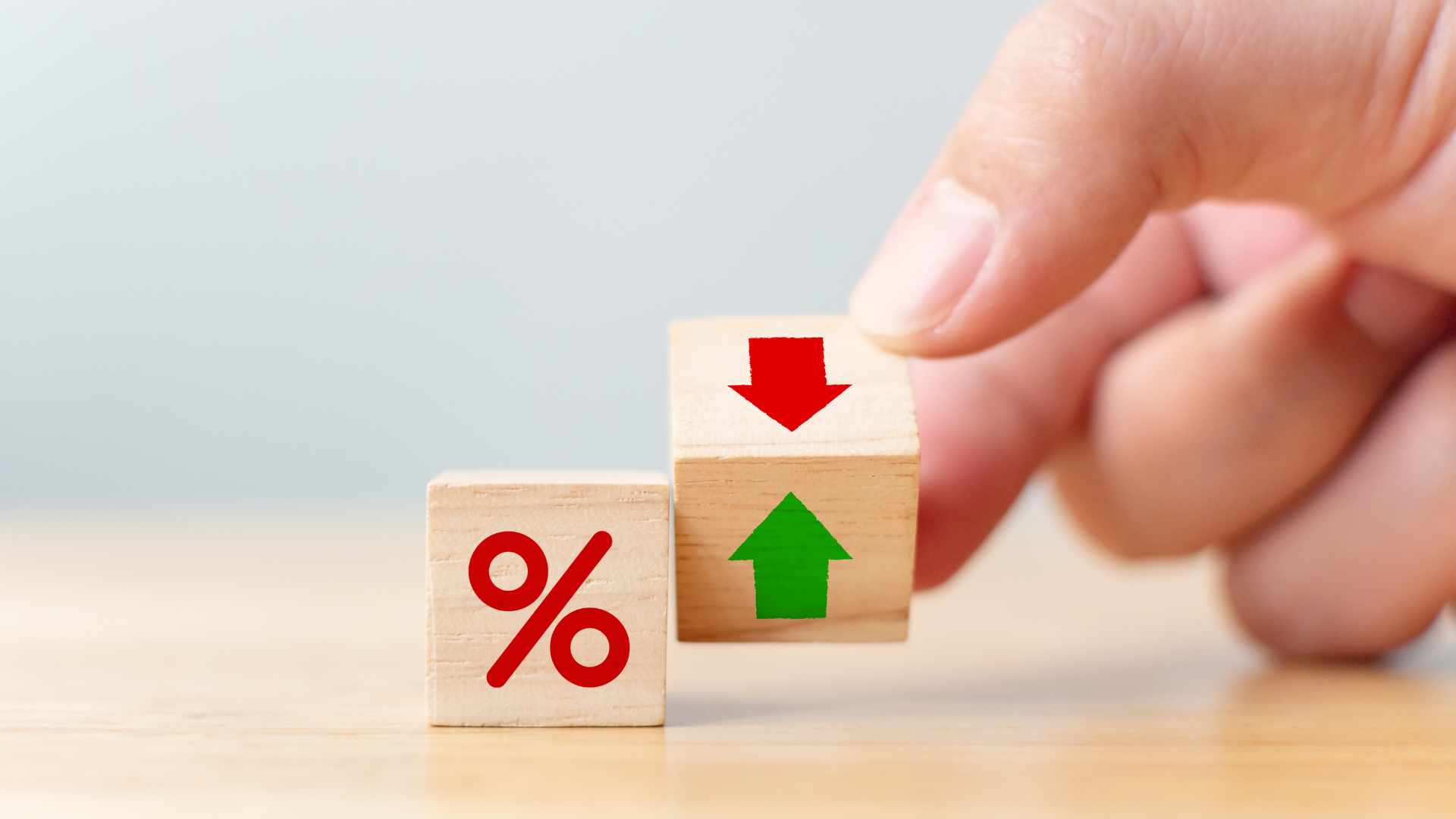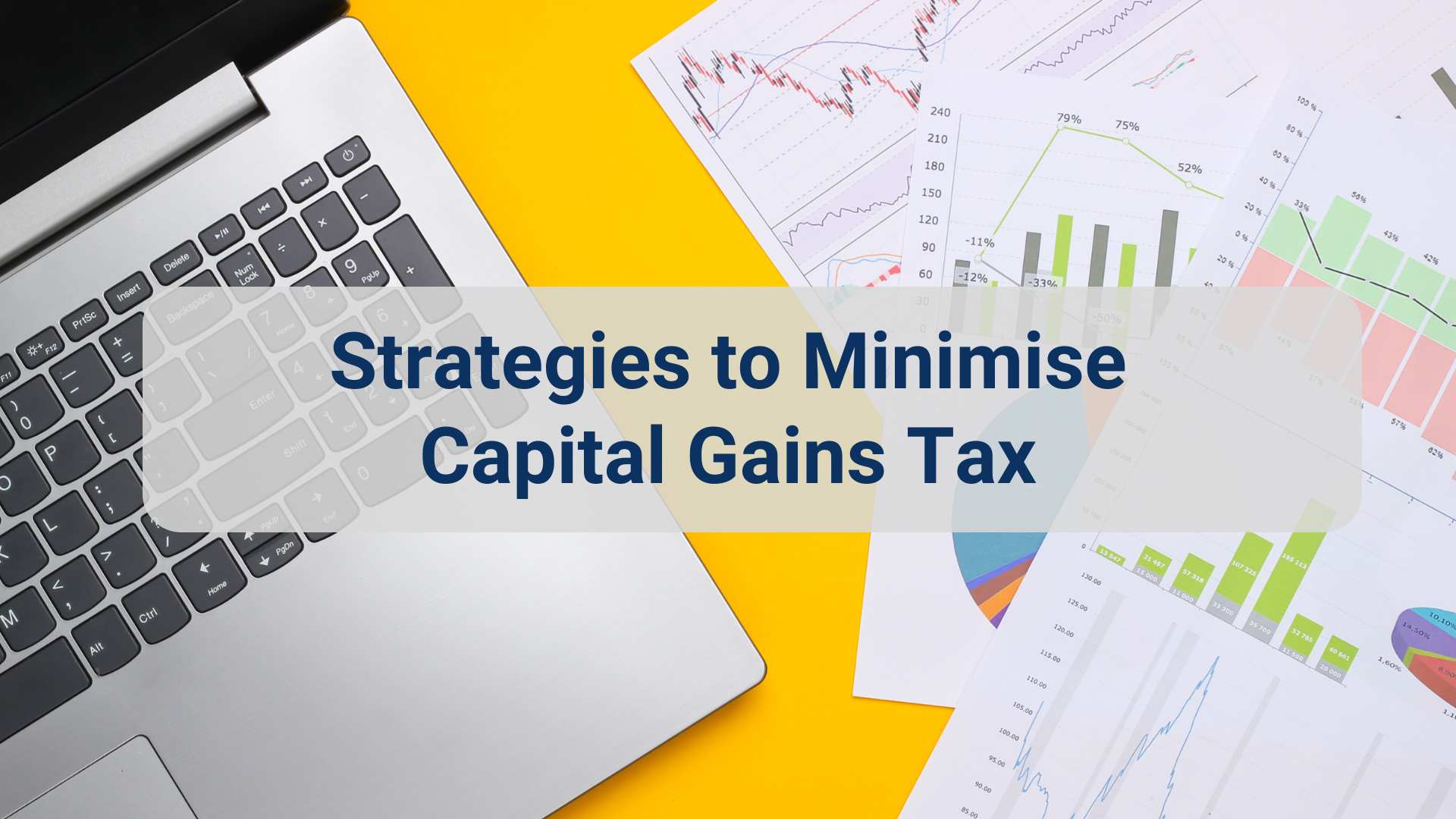Navigating the complex world of property investment can be daunting.
Understanding the tax implications, particularly Capital Gains Tax (CGT), is crucial.
In 2025, the landscape of CGT on investment property in Australia has evolved.
This article aims to demystify this complex subject.
We will delve into the intricacies of CGT, its calculation, and current rates.
We will also explore strategies to minimise your tax liabilities and legal ways to avoid CGT.
By the end of this comprehensive guide, you’ll be better equipped to make informed property investment decisions.

Understanding Capital Gains Tax on Investment Property
Capital Gains Tax (CGT) is a critical aspect of property investment.
It’s a tax levied on the profit made from selling an asset, such as an investment property.
The tax is not separate but forms part of your income tax.
Understanding CGT is essential for property investors.
It can significantly impact your return on investment and overall wealth accumulation strategy.
Here are some key aspects to consider:
- What is Capital Gains Tax?
- How is it calculated?
- What are the current CGT rates in Australia for 2025?
What Is Capital Gains Tax?
Capital Gains Tax (CGT) is a tax on the profit you make when you sell an asset.
In the context of property investment, it applies when you sell an investment property for more than you paid for it.
It’s important to note that CGT does not apply to your primary residence, only to investment properties.
How Is Capital Gains Tax Calculated?
Calculating CGT involves several steps.
First, you need to determine your capital gain or loss.
This is done by subtracting the cost base (the cost of acquiring and holding a property) from the proceeds of the sale.
If the result is positive, you’ve made a capital gain.
If it’s negative, you’ve made a capital loss.
Capital losses can be used to offset capital gains in the same year or future years, but they cannot be claimed against other income.
Current CGT Rates in Australia for 2025

In Australia, the CGT rate is not a fixed percentage.
Instead, it’s included in your assessable income and taxed at your marginal tax rate.
However, if you’ve held the property for more than 12 months, you may be eligible for a 50% CGT discount.
This means you only pay tax on half of your capital gain.
It’s important to stay updated with the latest tax rates and legislation to ensure you’re calculating your CGT correctly.
Strategies to Minimise Capital Gains Tax
Minimising your Capital Gains Tax (CGT) liability can significantly enhance your investment returns.
There are several strategies you can employ to achieve this.
These include timing your property sale, holding onto your property for the long term, utilizing the 6-year rule, and structuring your investment property financing efficiently.

Let’s delve into each of these strategies:
- Timing of Sale and CGT Implications
- Capital Gains Tax Discount for Long-Term Holdings
- The 6-Year Rule and Your Primary Residence
- Investment Property Financing and Tax Efficiency
Timing of Sale and CGT Implications
The timing of your property sale can have a significant impact on your CGT liability.
For instance, selling your property in a year when your income is lower can reduce your marginal tax rate, thereby reducing your CGT.
Also, if you anticipate a drop in property prices, selling before the drop can help you avoid a higher CGT.
Capital Gains Tax Discount for Long-Term Holdings
Holding onto your property for more than 12 months can qualify you for a 50% CGT discount.
This means you only pay tax on half of your capital gain.
This strategy can be particularly beneficial for investors in higher tax brackets.

The 6-Year Rule and Your Primary Residence
The 6-year rule allows you to treat a property as your primary residence for CGT purposes, even if you’re not living in it.
This can be particularly beneficial if you move out of your home and rent it out.
Under the 6-year rule, you can avoid CGT on the property for up to six years after you move out.
Investment Property Financing and Tax Efficiency
How you finance your investment property can also impact your CGT liability.
For instance, interest on a loan used to purchase an investment property is generally tax-deductible.
This can help offset your capital gains and reduce your overall tax liability.
It’s important to seek professional advice to ensure your financing structure is tax-efficient.
Legal Ways to Avoid Capital Gains Tax
While Capital Gains Tax (CGT) is a reality for property investors, there are legal ways to avoid or reduce it.

These strategies can help you maximise your investment returns and minimise your tax liabilities.
They include using the primary residence exemption, claiming tax deductions for property improvements, and taking advantage of investment property tax deductions.
Let’s explore each of these strategies in more detail:
- Using the Primary Residence Exemption
- Tax Deductions and Property Improvements
- Investment Property Tax Deductions
Using the Primary Residence Exemption
The primary residence exemption is a significant tax benefit for homeowners.
If a property is your primary place of residence (PPOR), you’re generally exempt from CGT when you sell it.
This exemption can also apply to a property that was your PPOR but is now an investment property, thanks to the 6-year rule.
Tax Deductions and Property Improvements
Property improvements can increase the cost base of your property, thereby reducing your capital gain when you sell.

However, it’s important to distinguish between repairs (which are tax-deductible) and improvements (which are not immediately deductible but can reduce your CGT).
Keeping detailed records of all property improvements is crucial for this strategy.
Investment Property Tax Deductions
Investment properties come with a range of tax deductions that can offset your capital gains.
These include interest on loans, property management fees, maintenance costs, and depreciation.
Here are some common deductions:
- Loan interest
- Property management fees
- Maintenance and repair costs
- Depreciation on fixtures and fittings
- Insurance premiums
- Council rates
Remember, it’s essential to keep detailed records of all expenses related to your investment property to claim these deductions.
The Impact of CGT on Property Investment Decisions
Capital Gains Tax (CGT) can significantly impact property investment decisions.
It’s a crucial factor to consider when buying, selling, or holding investment properties.
The potential CGT liability can influence the timing of property sales, the type of property to invest in, and the structure of property investment portfolios.
Understanding the implications of CGT can help investors make informed decisions and optimize their investment strategies.
Considering CGT When Buying or Selling
When buying an investment property, it’s important to consider the potential CGT implications.
The cost base of the property, which includes the purchase price and associated costs, will determine the capital gain when the property is sold.
Similarly, when selling a property, understanding the potential CGT liability can help in setting the selling price and timing the sale.
The Role of Professional Advice in CGT Planning
Navigating the complexities of CGT requires a deep understanding of tax laws and property investment.
Professional advice can be invaluable in this regard.
Tax professionals and financial advisors can provide guidance on CGT planning, helping investors to minimize their tax liabilities and maximize their investment returns.
Conclusion: The Future of Capital Gains Tax and Investment Property
The landscape of Capital Gains Tax (CGT) on investment property is ever-evolving.
Changes in tax legislation, economic conditions, and property market trends can all impact CGT liabilities.
Staying Informed on CGT Legislation
Staying informed about changes in CGT legislation is crucial for property investors.
Understanding the latest tax laws can help investors plan their investment strategies effectively and avoid unexpected tax liabilities.
Final Thoughts on Smart Property Investment
Smart property investment involves more than just buying and selling properties at the right time.
It also involves understanding the tax implications of investment decisions, including the impact of Capital Gains Tax. By staying informed and planning effectively, investors can optimise their returns and minimise their tax liabilities.

Frequently Asked Questions (FAQs)
- How much is capital gains tax?Capital Gains Tax (CGT) is not a fixed rate but part of your income tax in Australia. It depends on your marginal tax rate, which ranges from 0% to 45% based on your income. If you hold the asset for more than 12 months, you may be eligible for a 50% discount on the capital gain.
- What is capital gains tax? Capital Gains Tax (CGT) is a tax on the profit made from selling certain types of assets, including investment properties, shares, and other capital assets. In Australia, CGT is part of your income tax and is payable on the gain made from the sale of these assets.
- How to calculate capital gains tax? To calculate CGT, subtract the cost base (the purchase price plus associated costs) from the sale price of the asset. If the asset was held for more than 12 months, apply the 50% discount to the capital gain. The resulting amount is added to your assessable income and taxed at your marginal rate.
- How is capital gains tax calculated? CGT is calculated by determining the difference between the sale price and the cost base of the asset. The cost base includes the purchase price and associated costs. For assets held longer than 12 months, a 50% discount applies, and the taxable amount is then included in your income tax.
- How to work out capital gains tax? To work out CGT, calculate the capital gain by subtracting the cost base from the sale proceeds. Apply any available discounts (like the 50% discount for assets held over 12 months). Add the gain to your taxable income and apply your marginal tax rate to determine the tax payable.
- How to avoid capital gains tax? Legally avoiding CGT can be done by using exemptions like the primary residence exemption, utilizing capital losses to offset gains, and planning the timing of the sale when your income is lower. Consulting a tax professional for personalized strategies can be beneficial.
- Do retirees pay capital gains tax in Australia? Yes, retirees in Australia are subject to CGT. However, their marginal tax rate may be lower, potentially reducing the amount of CGT payable. Utilizing exemptions and offsets can help minimize CGT for retirees.
- How do you calculate capital gains tax? Calculate CGT by subtracting the cost base from the sale price of the asset. Apply any discounts if the asset was held for more than 12 months, then add the gain to your assessable income. Finally, apply your marginal tax rate to determine the tax payable.
- How does capital gains tax work? CGT applies to the profit made from selling an asset. The gain is calculated by subtracting the cost base from the sale price. This gain is then added to your taxable income and taxed at your marginal rate, with discounts available for assets held over 12 months.
- How much capital gains tax? The amount of CGT payable depends on your marginal tax rate and the capital gain made. For assets held over 12 months, a 50% discount applies. This discounted gain is added to your taxable income and taxed accordingly.
- How much is capital gains tax on property? CGT on property in Australia is included in your income tax and depends on your marginal tax rate. For properties held over 12 months, you can apply a 50% discount on the capital gain. The discounted gain is then added to your taxable income and taxed at your marginal rate.
- What is capital gains tax Australia? In Australia, CGT is a tax on the profit from selling certain assets, like investment properties and shares. It’s part of your income tax and the gain is added to your assessable income. For assets held over 12 months, a 50% discount is applied to the capital gain.
- How much capital gains tax will I pay? The CGT you pay depends on your marginal tax rate and the capital gain made. For assets held over 12 months, a 50% discount applies. The discounted gain is added to your taxable income and taxed at your marginal rate, which can range from 0% to 45%.
- How much is capital gains tax in Australia? CGT in Australia is not a separate tax but part of your income tax. It depends on your marginal tax rate, which ranges from 0% to 45%. For assets held over 12 months, a 50% discount on the capital gain applies.
- How to avoid capital gains tax on shares in Australia? Avoiding CGT on shares can be done by utilizing the primary residence exemption if applicable, offsetting gains with capital losses, and holding shares for more than 12 months to qualify for the 50% discount. Strategic planning and professional advice can also help minimize CGT.
- When do you pay capital gains tax? CGT is payable in the financial year when the capital gain is realized, which is when the asset is sold. The gain is included in your assessable income and taxed at your marginal rate.
- How to avoid capital gains tax in Australia? Avoiding CGT legally involves using the primary residence exemption, offsetting gains with capital losses, and holding assets for over 12 months to qualify for the 50% discount. Consulting a tax professional for specific strategies based on your circumstances is advisable.
- How to calculate the capital gain tax? Calculate CGT by subtracting the cost base from the sale price of the asset. Apply a 50% discount if the asset was held for more than 12 months. The resulting amount is added to your assessable income and taxed at your marginal rate.
- How to figure capital gains tax? To figure CGT, determine the capital gain by subtracting the cost base from the sale price. Apply any applicable discounts, like the 50% discount for long-term holdings, and add the gain to your taxable income. Your marginal tax rate will then determine the tax payable.
- How to figure out capital gains tax? Figuring out CGT involves calculating the capital gain (sale price minus cost base), applying discounts for long-term holdings, and adding the gain to your taxable income. The gain is then taxed at your marginal rate, which varies based on your income.
- What is the capital gains tax? The “of” in CGT likely refers to the nature or application of the tax. CGT is applied to the profit from selling capital assets and is included in your assessable income. The rate depends on your marginal tax rate, with discounts for long-term holdings.
- How much capital gains tax do I pay? The amount of CGT you pay depends on your capital gain and marginal tax rate. For assets held over 12 months, a 50% discount applies to the gain, which is then added to your taxable income and taxed at your marginal rate, ranging from 0% to 45%.
- How much is capital gains tax in Australia? In Australia, CGT is included in your income tax and depends on your marginal tax rate. The rate ranges from 0% to 45%, with a 50% discount available for assets held for more than 12 months.
- How much is capital gains tax in NSW? CGT in New South Wales (NSW) follows the same rules as the rest of Australia. It is part of your income tax, and the rate depends on your marginal tax rate, which ranges from 0% to 45%. A 50% discount applies for assets held over 12 months.
- How do I avoid capital gains tax? To legally avoid CGT, use strategies like the primary residence exemption, offsetting gains with capital losses, and holding assets for over 12 months to qualify for the 50% discount. Consulting a tax professional for tailored advice can also be beneficial.




